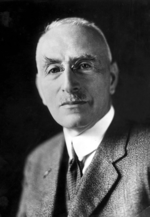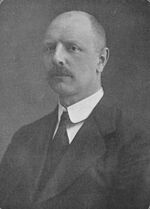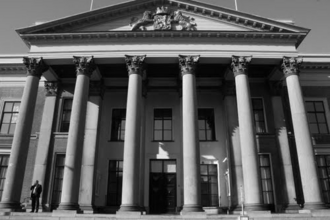Supreme Court of Rensselaerswijck: Difference between revisions
(Created page with "{{WIP}} {{Infobox building | name = Supreme Court of Rensselaerswijck | native_name = Hoge Raad van Rensselaerswijck | image = Rensselaer...") |
No edit summary |
||
| (One intermediate revision by the same user not shown) | |||
| Line 23: | Line 23: | ||
===Current Court Makeup=== | ===Current Court Makeup=== | ||
[[File:Rensselaer Supreme Court Layout.png|thumb|left|Layout of the Supreme Court, the majority of which are Liberal Democrat aligned.]] | [[File:Rensselaer Supreme Court Layout.png|thumb|left|Layout of the Supreme Court, the majority of which are Liberal Democrat aligned.]] | ||
The Supreme Court is currently consisted of a fairly | The Supreme Court is currently consisted of a fairly centrist, liberal makeup of justices. The majority of justices on court are considered to be Liberal Democrat aligned while three are considered to be aligned with the views of the Republican Unity Party, and two with the Mercantile Interest Party. Despite being aligned with the Liberal Democrats, the court has generally favored with the ruling coalition government, and even struck down various Liberal Democratic plans, most notably the entire Liberal Democratic administration of Rudolf Martens. | ||
{|class="wikitable" width="100%" | {|class="wikitable" width="100%" | ||
| Line 98: | Line 98: | ||
|[[Parliament of the Rensselaer Republic#Liberal Democrats|Liberal Democratic]] | |[[Parliament of the Rensselaer Republic#Liberal Democrats|Liberal Democratic]] | ||
|} | |} | ||
==Notable Cases== | |||
===Rensselaerswijck v. Martens=== | |||
The election of [[President of Rensselaerswjick|President]] [[Rudolf Martens]] in 1926 led to a Liberal Democratic administration which slowly centralized as time went on. By 1928, President Martens signed an executive order merging the posts of both President and Deputy President, while the Deputy President presented legislation to make such move constitutional, triggering the [[Martens Administration Scandal]]. | |||
Latest revision as of 20:30, 3 May 2020
This article is incomplete because it is pending further input from participants, or it is a work-in-progress by one author. Please comment on this article's talk page to share your input, comments and questions. Note: To contribute to this article, you may need to seek help from the author(s) of this page. |
The Supreme Court of Rensselaerswijck (Freijian: Hoge Raad van Rensselaerswijck) is the highest court in all of Rensselaerswijck's judicial system, and is seen as the head of the Judicial Branch. It has ultimate jurisdiction over all federal and regional court cases that involve federal law or violate the constitution of Rensselaerswjick. They are given the power to strike down executive orders by the Executive Branch or legislation proposed by the Legislative Branch which would violate the constitution or basic law.
It is consisted of an equal panel of 9 justices, all elected to terms of twenty years or until they reach a retirement age of seventy-two. Each justice is elected similar to other positions in government, however all party affiliation to any political organization is renounced before being elected. Due to this, no justice can endorse a particular party, or even receive campaign aid besides an endorsement by political parties. Despite this ban on political interference, the viewpoints of certain judges still align themselves with political parties, whether it be unofficially or not.
Layout of the Supreme Court
Current Court Makeup
The Supreme Court is currently consisted of a fairly centrist, liberal makeup of justices. The majority of justices on court are considered to be Liberal Democrat aligned while three are considered to be aligned with the views of the Republican Unity Party, and two with the Mercantile Interest Party. Despite being aligned with the Liberal Democrats, the court has generally favored with the ruling coalition government, and even struck down various Liberal Democratic plans, most notably the entire Liberal Democratic administration of Rudolf Martens.
| Picture | Name | Tenure | Mandate of Office | Affiliation | |||
|---|---|---|---|---|---|---|---|
| 1 | 
|
Justice Stijn Reijnders | Mercantile Interest | ||||
| 2 | 
|
Justice Wil Ophof | Mercantile Interest | ||||
| 3 | 
|
Justice Lodewijk Ernst Visser | Republican Unity | ||||
| 4 | 
|
Justice Witius Hendrik | Republican Unity | ||||
| 5 | 
|
Justice Dirck Fock | Republican Unity | ||||
| 6 | 
|
Justice Jan-Jaap Balkema | Liberal Democratic | ||||
| 7 | 
|
Justice Scato Laman Trip | Liberal Democratic | ||||
| 8 | 
|
Justice Paul Van Iseghem | Liberal Democratic | ||||
| 9 | 
|
Justice Michiel Muisebelt | Liberal Democratic | ||||
Notable Cases
Rensselaerswijck v. Martens
The election of President Rudolf Martens in 1926 led to a Liberal Democratic administration which slowly centralized as time went on. By 1928, President Martens signed an executive order merging the posts of both President and Deputy President, while the Deputy President presented legislation to make such move constitutional, triggering the Martens Administration Scandal.
